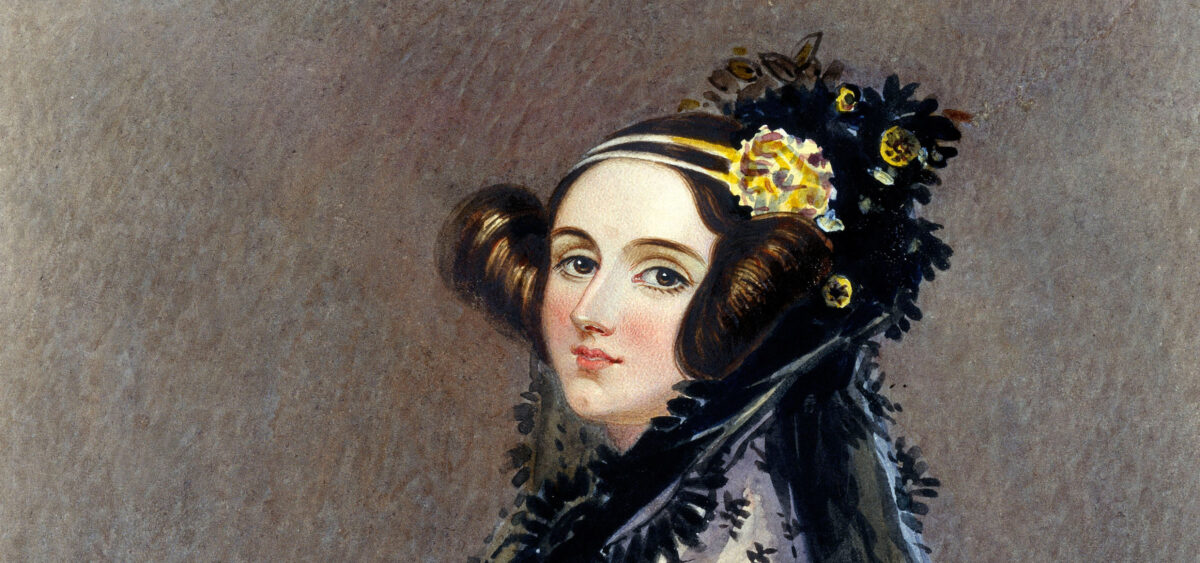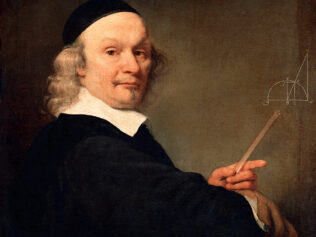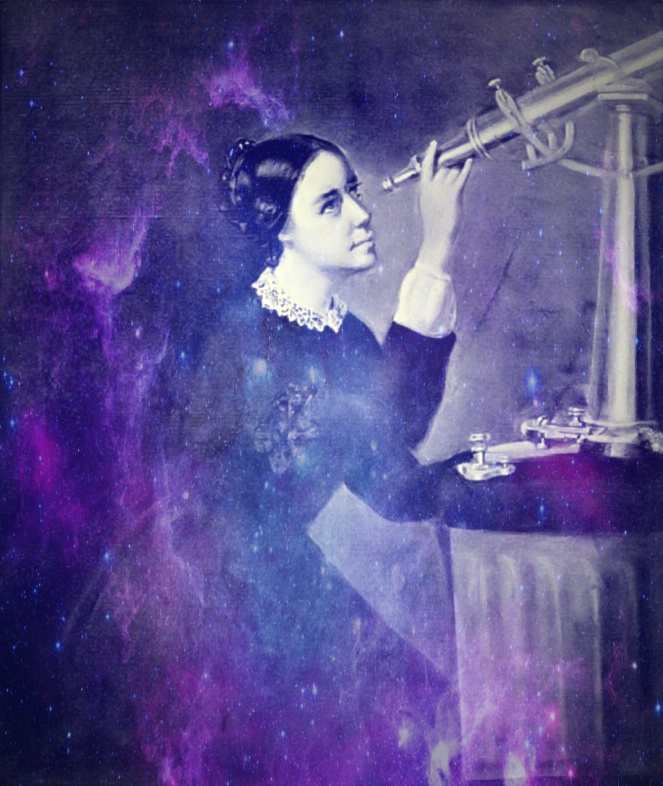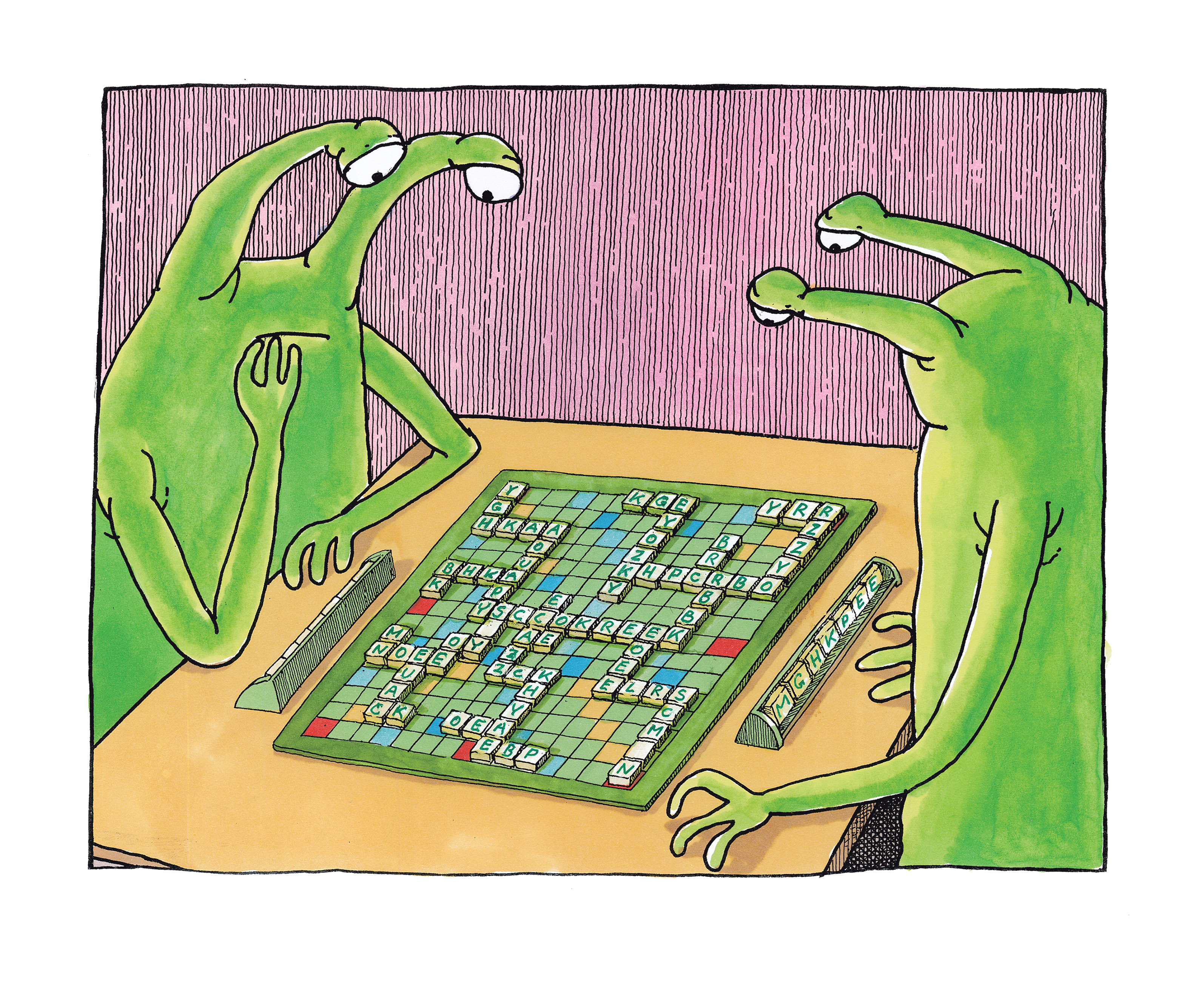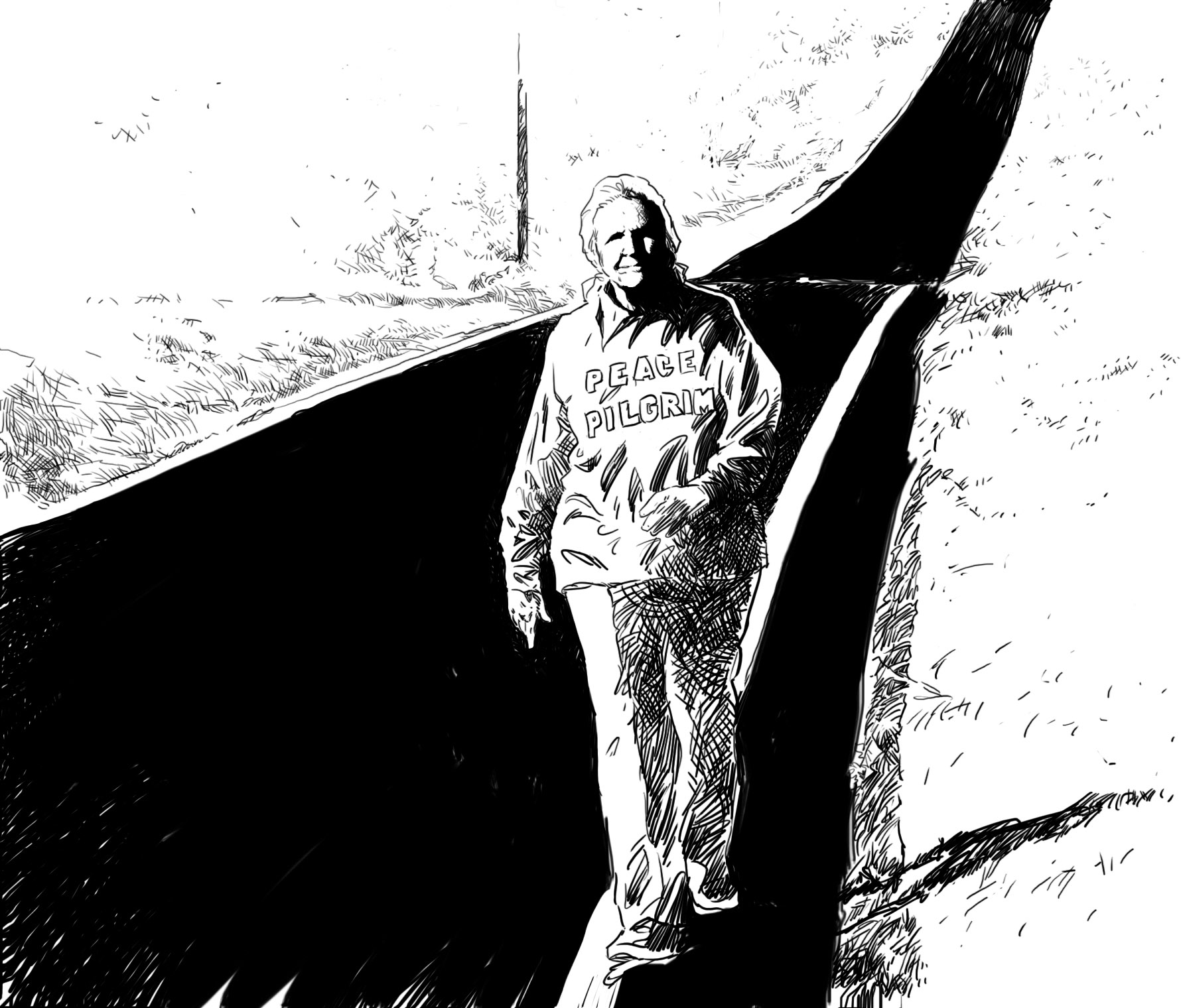
She was a woman ahead of her time. She caused scandals and lost considerable sums of money betting on horses. She also foresaw changes that went unnoticed by her contemporaries – fellow inventors who were less creative than her. Meet Ada Lovelace, the world’s first computer programmer.
Gender equality was non-existent in those times. Ada Lovelace could not become a member of the Royal Society in London, since membership status in the British academy was a privilege reserved for men. So she signed up her husband, who participated in the society’s sessions, copied articles from its library and shared his notes with his wife.
Ada was so ahead of her time that 150 years had to pass before her achievements were rediscovered and properly acknowledged. In the early 1970s, the U.S. Department of Defence named an early programming language after her. It is still used today.
The daughter of a wild man
It is impossible to tell Ada’s story without mentioning her father, the illustrious Lord Byron (George Gordon Byron). She never met him, because her parents separated when she was five-weeks old. But the poet paradoxically had a large influence on his daughter. Ada was brought up in Kirkby Mallory, a village in Lancashire County. The Kirkby Hall residence, where she lived with her mother and grandparents, does not exist anymore. Little Ada was educated so that she never followed in her father’s steps. Literature, visual arts and music were all forbidden. Instead she studied biology, geography, history and, most importantly, mathematics. Ada was taught by formidable tutors from an early age – an unusual educational path for a well-bred young lady in the early 19th century. Annabella, Ada’s mother, did everything to ensure that her child became the exact opposite of her father and didn’t inherit his “diabolical character”. In fact, Ada turned 20 years old before she saw her father’s portrait for the first time.
Byron was at the height of his fame when he died in 1894. His daughter was eight years old at the time. Weakened by illnesses and frequent blood-letting, considered the perfect treatment for each and every ailment, the poet passed in Greece, where he was engaged in the fight for the nation’s independence. There was no better subject for gossip among the English aristocracy than Lord Byron, and it must be said that he tenaciously added water to the gossiping mill with his unabashed actions. His countless affairs were vividly commented upon, of course, especially since he entertained them with individuals of both sexes. This is all the more surprising if we consider the fact that in England, homosexuality was punishable by hanging.
Despite her mother’s efforts, Ada was fascinated by her father. She named her first son Byron, and the younger one was christened Ralph Gordon. She called her approach to mathematics a “poetic science”, in honour of her father’s occupation. And just like her father, she had a proclivity for hazard. At the end of her life, in the 1840s, she lost over £3000 betting on horses (the equivalent of around £290,000 today). Although she tried to formulate a mathematical algorithm for high stakes betting, the project was a complete failure and only exacerbated her debts.
Who was Ada’s mother, who also happened to be the only wife of the lord-poet? Annabella was a thoroughly-educated and deeply-religious woman, as well as an exceptionally bad fit for the king of scandals. Their marriage was doomed from the start. Annabella actually declined Lord Byron’s first proposal, but later decided to accept the mission she believed God has given her to convert the “wild man”. After leaving her husband, she felt guilty for years, regretting that she gave up so easily and did not do everything in her power to save her sinning husband.
Ada was a sickly child. At the age of eight, she had such strong migraines that they worsened her eyesight and decreased her field of vision. In June 1829, she became paralysed after a bout of measles and stayed in bed for a long time. Nowadays doctors suspect she also suffered from meningitis.
Before that, at the age of 11, she used to daydream about flying. It wouldn’t have been anything out of the ordinary for a child her age if it weren’t for the methodical approach she adopted: she engaged in studying the anatomy of birds in order to calculate their wing-to-body ratio and carefully wrote everything down. First, she decided to build wings and searched for the right material. She thought about using paper, silk, metal wire and feathers. In one of her projects, the wings were to be fuelled by a steam engine. The young scientist decided to collect her observations in a ‘book’ entitled Flyology, which she even illustrated herself.
Dining with the father of computing
Once Ada turned 17, she travelled to London to participate in the capital’s social season as a debutante, attending balls and dinner parties. In May 1833, she was formally introduced to the King in St. James’ Court along with other debutantes. This meant she was grown up and ready for marriage, and bachelors of good stock could now ask for her hand.
In the first days of June, Miss Byron attended a party that changed her life. It was hosted by Charles Babbage, a 41-year-old widower who came from a family of bankers and goldsmiths, and had invented a counting machine that fascinated Ada. The scientist invited the young woman and her mother for a private viewing, so that both ladies could admire the device from up close – it was one-metre high and made of over 2000 copper elements. Annabella called it the “thinking machine”. It was a difference engine.
Babbage went down in history as the father of computers and a mathematician who revolutionized his field of research. But this brief description does not encompass the variety of his interests. He was a philosopher as well, and one of the founders of the Royal Astronomical Society. A year before meeting Ada, he published a book on the industrialization of manufacturing, largely focused on the division of labour. He declined knighthood and even refused to accept the title of Baron.
In those times, large-scale calculations in the fields of agriculture, architecture and astronomy were based on logarithm tables. Mistakes were bound to happen, and their consequences could be dire, especially when the incorrect tables were used by architects, bridge constructors or ship makers. Babbage, however, had a vision that in the early 19th century seemed surreal at best. One day while correcting the tables in the Royal Astronomical Society, he allegedly exclaimed: “I wish to God these calculations had been executed by steam.” It’s hard to say whether these words are true or not. The fact is that Babbage immediately started working on his idea and soon infected others with his passion.
Mechanical calculators obviously existed before – they had been manufactured since the 17th century. We now know that hand-powered devices were even used to carry out basic calculations in ancient times. But Babbage designed an engine that could calculate polynomial functions with six orders of difference and up to 20-digit numbers.
In 1819, the mathematician started working on a prototype for a difference engine, which he finished three years later. His design drew the interest of the British government and in 1823 he was given £1700 to build the engine. It was a lump sum – around £165,000 in current value – but the machine turned out to be too complicated and too expensive. Metal and copper parts were produced far less efficiently than today. They were largely manufactured and various elements often didn’t fit one another once they were assembled. In 1832, Babbage and Joseph Clement designed another machine that calculated polynomials with second-order differences and six-digit-numbers. This was the prototype Ada admired at the party. A year later, however, the government withheld financing and completely aborted the whole project in 1842.
Yet by that time, Babbage was already pre-occupied with a new invention, and assisting him was Lord Byron’s daughter, who turned out to be his soul mate. They were planning to design an analytical machine.
Mathematics isn’t for women
Ada befriended Babbage, exchanged letters with him and visited him, but didn’t have time for inventions in the first seven years of their relationship. In 1835, she married William King, who was soon appointed Earl of Lovelace. Only after giving birth and raising three children did Ada find the time to sacrifice herself to mathematics once again. She asked Babbage to discreetly find a teacher for her. The future tutor was not to know whom he would be teaching until the very first lesson. Finally, Augustus De Morgan was chosen: he was an illustrious mathematician and logician who invented the term ‘mathematical induction’, as well as the scientist who discovered the mathematical laws known today as De Morgan’s laws.
The mathematician started enriching the Countess’s knowledge and encouraged her to develop a habit of everyday studying. Ada was a motivated student. For instance, she wanted to understand whether solitaire was based on mathematical laws, but her teacher nudged her towards differential calculus. In his private notes, De Morgan later concluded that from lesson to lesson Ada paid more and more attention to details. His comment is all the more interesting considering he publicly declared that women were not intellectually capable of studying mathematics.
The young Countess thought highly of herself and her mathematical skills – De Morgan and Babbage only strengthened her convictions. It should be added that the true character of her relationship with Babbage remains unclear to this day. The letters they exchanged on a daily basis are full of emotions and exaltation, but that was simply Ada’s writing style at the time. Her manuscripts are riddled with underlined phrases, exclamations points and ornamental expressions. Although there is no evidence of romance, it is widely believed that the two had more going on than just common passion.
In the field of moral scandals, Ada decidedly followed in her father’s footsteps. As an 18-year-old, she had had an affair with a teacher who was much older than her. The couple tried to run away, but were recognized and the unruly daughter escorted back home. Her mother did everything to make the whole matter disappear and sweep it under the rug. Later Ada had various other lovers, and her husband’s diary entries show that when she confessed one of her spicy secrets to him, the Earl… gave up marital intercourse. When she fell ill, her panic attacks were caused by the visits of a man named John Crosse. We know very little about their relationship, but among the late Countess’s memorabilia certain dispositions were found, forbidding the servants to allow Crosse inside the house. Moreover, Crosse also destroyed most of his correspondence with Ada after her death.
Although her father set the bar exceptionally high, Ada did not avoid scandals. She wrote very candid letters to her mother, who relentlessly criticized her approach to keeping the house and motherhood. “I believe myself to possess a most singular combination of qualities exactly fitted to make me pre-eminently a discoverer of the hidden realities of nature,” wrote Ada. She cannot be said to have lacked self-confidence. When at some point she became bored with mathematics, which did not bring her any immediate results, she considered taking up music or literature. However, in 1842 she returned to what she did best.
A note to other spaces
Babbage felt increasingly frustrated and discouraged at that time. The difference engine still wasn’t ready, with funds and prospective partners sorely missing. In the early 1830s, the inventor started cooperating with an engineer who was supposed to look over the process of construction, but the man quit soon enough and kept all the blueprints, along with those drawn by Babbage.
The mathematician did not pursue the project because he was soon engrossed in a new endeavour – the above-mentioned analytical engine, designed to perform calculations in any freely-programmed order. Babbage wanted to create a steam-powered machine, with data and programs entered into the system using perforated cards. The results were to be drawn by a drafting device or inscribed on the cards. Just like in modern computers, the design was based on the separation of memory and the so-called ‘mill’ – the processing unit. After the difference engine fiasco, the British government wasn’t exactly eager to fund more of Babbage’s designs. In 1841, Robert Peel became Prime Minister, and he was the one Babbage bombarded with pleas for money. His requests remained unanswered, even though at one point they were discussed in Parliament.
Interestingly, the analytical engine sparked more interest abroad. Babbage was invited to give lectures in Turin, where he presented the engine’s potential. He never published anything else about it, before or after that. But in the Piedmont capital, a certain Luigi Menabrea carefully noted what he said – he was a military engineer who became the Prime Minister of Italy 27 years later. The whole affair gets even more complicated, because Menabrea published his notes on Babbage’s lectures in French.
Ada Lovelace decided that Babbage’s work should be popularized in Britain and translated Menabrea’s article. Although Babbage suggested she write her own work on the matter, she opted for a translation and added extensive commentaries to it. Between 1842 and 1843, she spent nine months preparing the publication and corresponded with Babbage almost every day. The London mail was delivered six times a day, and servants could also be dispatched in urgent matters. Even if their correspondence did have a Victorian veneer to it and included countless courtesies, it also sounds dynamic and concrete from a contemporary perspective, just like emails today. Ada would ask questions, the mathematician answered them, she replied with comments.
Lovelace certainly didn’t allow Babbage to take the upper hand in their relationship. For instance, he demanded that the publication contain his anonymous introduction, explaining how the British government had failed to fund his research and recognize the value of his invention. Ada politely but firmly refused. After all, her notes are three times longer than Menabrea’s text and contain truly revolutionary information.
In a note marked with the letter G, Lovelace outlined the algorithm for the functioning of the analytical engine. The algorithm makes it possible to generate Bernoulli numbers, a sequence of rational numbers introduced to facilitate the calculation of sums of positive integer powers. Today, Note G is believed to be the first published computer program, which makes Ada Byron, Countess of Lovelace, the first programmer in history.
The power of will and the weakness of flesh
Nevertheless, the mathematician’s work continues to spark controversy. First of all, we don’t know whether Ada created the formula on her own or with Babbage’s help. In his autobiography, Babbage wrote he wanted to “save her the trouble”, but he also acknowledged that Ada found and corrected a “terrible mistake” of his. Babbage’s papers also include mathematical formulas that we would call programs today, with the earliest one dating back to 1830, but the inventor of the difference engine never published them, and Ada did.
Besides, Note G isn’t the only revolutionary passage in Lovelace’s commentary. “Ada saw something Babbage seemed not to notice. In Babbage’s world, machines were related to numbers. But Lovelace understood that numbers could represent different systems and not just quantity, like letters or music notes. The evolution from counting machines to manipulating symbols according to certain principles marked the crucial transition from calculations to general computing, or computers. This transition was clearly made by Ada in her article published in 1843,” writes Doron Swade, curator at the Science Museum in London, specialist in the history of computing. According to him, the Countess’s notes suggest she was the first person who fully understood the potential of Babbage’s invention.
A similar opinion has been put forward by Stephen Wolfram, a British scientist specializing in particle physics and computer algebra, as well as the inventor of the Mathematica computer program. Wolfram is the author of a long essay on Lovelace and Babbage, published on Wired.com. In it, he argues: “Babbage just wanted a machine that was as effective as possible at producing mathematical tables. But in the effort to design this, he ended up with a universal computer. When Ada wrote about Babbage’s machine, she wanted to explain what it did in the clearest way – and to do this she looked at the machine more abstractly, with the result that she ended up exploring and articulating something quite recognizable as the modern notion of universal computation.”
Ada was proud of her publication – the Lovelaces gave out copies to friends and acquaintances. Lord Byron’s daughter also wrote a long, 16-page letter to Babbage, in which she carefully suggested she would take care of the difference engine project from now on and ensure its construction. Wolfram estimates the engine would have been the size of a locomotive, made of 50,000 moving elements, and would have had enough computational power to produce mathematical tables composed of 30- or even 50-digit numbers. New results would appear every four seconds. Babbage wasn’t very enthusiastic about her suggestion (Ada predicted this and wrote that he would probably never talk to her again), but we know from subsequent letters that he provided her with the blueprints soon enough.
Lovelace also had other research projects in mind. In 1844, she announced that she wanted to develop a mathematical model to illustrate how the brain produces thoughts and nerves produce feelings (“an arithmetic of the nervous system”). She was also interested in the relationship between music and mathematics. Unfortunately, her health started declining – she suffered from cervical cancer. The worse she felt, the more she succumbed to her mother’s influence. Annabella even controlled who could visit her daughter and who couldn’t. The Countess still corresponded with Babbage, but her letters were more and more focused on daily matters. Under her mother’s influence, she also became increasingly engaged in religious matters. She died in 1852.
Wolfram wonders what would have happened if Ada hadn’t fallen ill. Would the brilliant woman have finalised the development of the analytical engine? And if so, what would it have changed? Would Babbage and Lovelace have concluded that the engine should be electromechanical, instead of mechanic? Wolfram leans towards the latter possibility, since both mathematicians shared mutual friends with the inventor of the telegraph, Charles Wheatstone. The author of the article also reflects on whether Babbage and Lovelace would have thought of switching to binary code, since they obviously realized their invention was more than just a counting machine. As much is suggested in the notes of Ada Lovelace, the inventor of programming.


